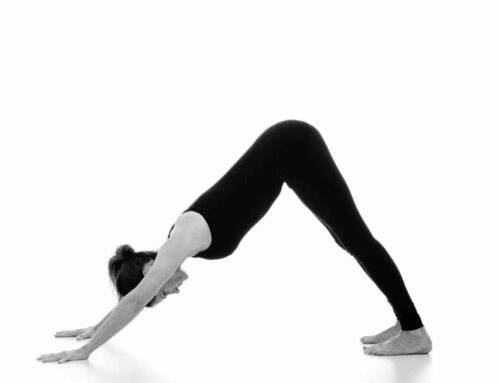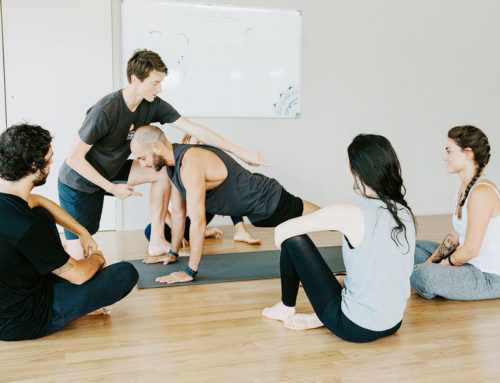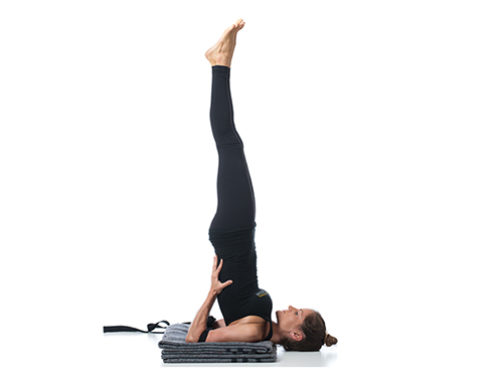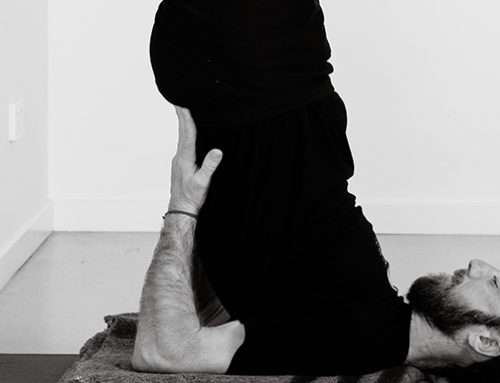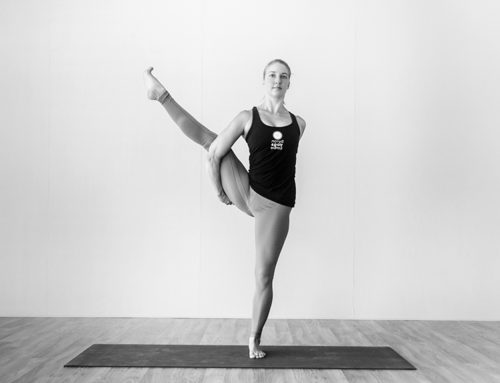
You're standing with legs spread and hips lined up. You've sucked in your belly and lengthened your spine. You bend your front leg to lower into Virabhadrasana I and your hips begin to tilt – you have lost alignment. Although quite a simple looking standing pose, a well-aligned and deep Virabhadrasana I can be most elusive, where compressed lower backs and furrowed brows among yogis abound.
But, explains Judy Krupp, co-teacher with John Ogilvie on Byron Yoga Centre's level one and two, it pays to persevere – "Virabhadrasana I is a great standing preparatory pose for backbends. It opens the upper body and strengthens the shoulders, arms, and the muscles of the back – all essential for strong backbends."
Sanskrit
Virabhadra – in Hindu mythology, Virabhadra is a powerful hero created from a hair of Shiva to lead Shiva's army against Daksa
Asana – physical posture
Benefits
Stretches the chest, upper back, lungs, shoulders, neck, abdominals and psoas (groins). Strengthens the shoulders, arms, and the muscles of the back. Strengthens and stretches the thighs, calves, and ankles.
Here we address some common challenges of the pose.
Deep curve in lower back
You've stepped nice and wide and bent deeply into the front leg, but your pelvis is tilting forward, creating a deep curve in the lower back and compressing the spine. If your front leg begins to straighten when you lift your pubis and abdominals towards the navel then tight hip flexors or psoas is likely holding you back. The hip flexors of the back leg holds the twist in the pelvis and maintain length in the front of the hips, so long psoas or hip flexors are needed to be able to bend deeply while keeping the pelvis aligned and without compressing the lower back.
"A good preparation to stretch the psoas or hip flexors is to lunge and actively lifting your back knee one inch from the ground while counteractively dropping your groin towards the ground," says Judy.
"It is important for the health and safety of the sacroiliac joint that you move the back groin around. For this you need flexibility in the hip flexors of the back leg."
Because the hip of the rear leg is hyper extended and the torso is upright, some backbend in the lumbar spine is inevitable to adapt. You can also lean the chest forward slightly if your lumbar spine tends to close down in the pose. To get the most out of the asana safely, go slow; when you feel the lower back start to tighten, back off and stay at that height. "Hold onto the alignment as much as possible, that is the most important thing," says Judy. "Your Virabhadrasana depends on the flexibility and strength of the back leg and shoulders so be patient and do lots of preparatory lunges and shoulder opening."
Those with long psoas or hip flexors can lift the pubis toward the navel, engage the abdominals to move the rib cage back and lengthen the tail toward the floor before bending the front knee. This will keep the pelvis from tilting forward. "Those who are flexible enough to stretch the psoas while working on the strength of the abdominals start to see a perfect balance emerging – a moving co-contraction with the tail bone forward and the pelvic bone back," says Judy.
Extend the spine further by strongly using the upwards and backwards lift with the hands to lift the rib cage and chest, drawing the shoulders back and down and taking excess tension off the lower back. Keep the momentum upwards, rather than worrying about extending down with the coccyx. Feel your waist, belly, and spine being energetically lifted upward, starting at the heel of back leg, running up the back leg, through the front and back of the torso, into the chest and up into the arms.
Back heel keeps rising
As with all standing poses, taking the time to align your feet correctly in the pose goes a long way towards achieving correct alignment. With both heels in a line parallel with the edge of your mat, your front foot is also parallel, at 90 degrees, and your back foot is at a 45 to 60 degree angle. If you back heel keep rises up, you can place a folded blanket under you heel in the short term.
"Strength in your back leg is vital in this pose," says Judy. Push into the feet to bring the hip of the back leg forward and the hip of the front leg back. Hold down the big toe and inside heel but lift the inner arch to help open the hip flexors. You can also use a wall to help ground through the back heel. Press strongly through the outer edge of the back heel against the wall while observing your lower back to avoid moving too forcibly.
"There is a tendency to collapse inwards with the legs in Virabhadrasana," says Judy. "Lift the arch of the back foot. Hold down the big toe and inner heel but lift the inner arch of the foot. This is important as it is connected with the groin." A strong back foot with correct alignment stretches the muscles of the outside thigh and engages the inside leg, building strength in the abductors.
Shoulders
For those with stiff shoulders, raising the arms parallel to each other can feel like agony, let alone joining the palms, as Iyengar advises. If your shoulders are tight or otherwise problematic, keep your raised arms parallel or slightly wider. You may like to move them slightly forward of the torso rather than in line with the ears.
Firm your scapulas against your back and, at the end of your inhalation, feel your collarbones broaden towards the outer edges of your shoulders. If you have neck problems, look straight ahead rather than up at the hands. Breathe deeply in to the pose, taking full advantage of the expansion you've created in chest.
Reaching the full expression of the pose with the front thigh parallel to the floor takes much diligence. Like all asanas, it's important to enjoy the journey. Always choose alignment over depth and try to find a sense of power and grace evident in this great warrior pose.

